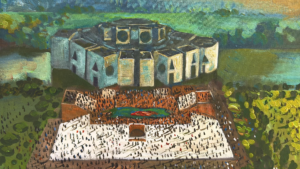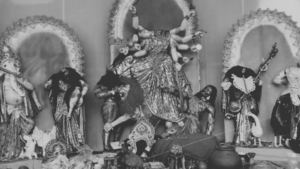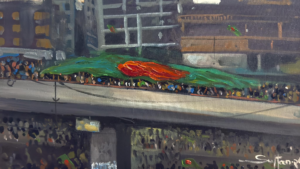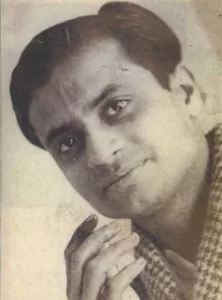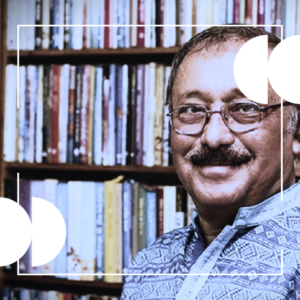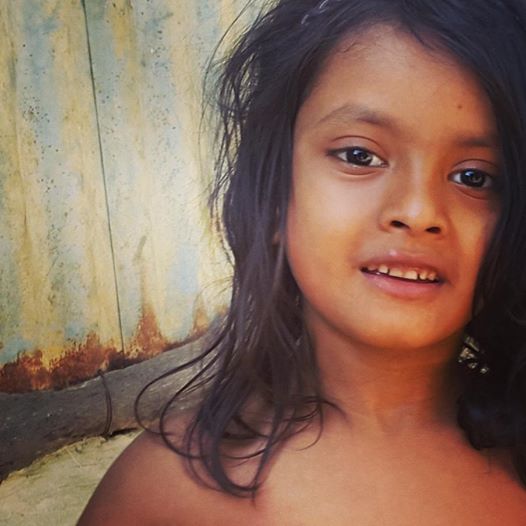
Rohingya girl at Kutupalong camp (photo: Adnan R Amin)
The International Community seems to be unable, if not unwilling, to adequately respond to the recent escalation in Rohingya persecution. Long before this crackdown, apartheid conditions prevailed for the Muslim minority. Life as a Rohingya was characterized by denial of citizenship, disqualification from government and civil service jobs, incarceration, forced labour, property confiscations, restrictions on travel, and restrictions on number of children. Though not sensational, their oppression was systemic and systematic long before the British left.
Then the 2015 ‘boat people‘ crisis broke into the headlines – spurred on by mass deaths in mid-sea. It was an unparalleled, manmade human tragedy, alongside the Syrian refugee crisis. The actual sight of stranded, emaciated people in flimsy boats attracted much more attention than did the slow-burn, normalized oppression. Now, a full-blown genocide hounds the Rohingya and the world seems reluctant to go beyond talk and half-measures.
True and untrue stories of unimaginable brutality against the Rohingya are surfacing almost every day. Compared to some of the systematic genocide stories, accounts of being evicted and dispossessed seem quite tame. Just the other day, a photo surfaced of an Aylan Kurdi-esque toddler – allegedly shot dead by Myanmar border forces – lying face first on a muddy riverbank. Days later, a video emerged of another Rohingya child being tortured with an electric taser. Authenticity of both pieces of evidence has been challenged in various media circles.
But these stories pale when we hear about Noor Ayesha’s escape. Having reached Bangladesh territory with her daughter, Noor narrates how five of her children were lined up and then burnt alive, while two other daughters were killed only after they were raped. Soldiers then killed her husband, raped her but ‘fortunately’ failed to find her youngest hiding nearby.
In Bangladesh, there is ample public sympathy for the Rohingya situation, especially from those who view their plight as persecution of coreligionists or Muslims. And as is often the case these days, fake news stories, macabre stories and horrific photos (whether of Rohingyas or not) are being circulated to exaggerate what has already been called a ‘genocide’.
The opposite sentiment is quite common too: one that holds that Rohingyas are not this country’s problem and it shouldn’t be made to shoulder the burden.
Incidentally, that’s exactly what Buddhist extremists say in Myanmar.
Like many academics and activists, Prof. Penny Green holds the Myanmar political leadership responsible. She argues that Aung San Suu Kyi’s unprecedented moral and political capital places on her the onus of using such capital for the Greater Good. This ‘Greater Good’ cannot exclude the Rohingya minority, just because they are of a different ethnicity and worship a different God.
“In a genocide silence is complicity, and so it is with Aung San Suu Kyi and Burma’s desperate Rohingya community.”
– Dr. Penny Green
Far from accepting partial onus, Suu Kyi recently giggled while telling supporters how to deal with the ‘fabrication’ of ethnic cleansing in the Rakhine State. She assured the audience that if the people of Myanmar refused to believe the propaganda, nothing else could cause serious problems. Her response is available on YouTube.
And the petite Nobel laureate is right. On the international stage, stories about Muslim persecution, at the hands of Buddhist extremists, fit no known narrative. Besides, there are so many Muslims dying of infighting, civil war and terrorism that this case doesn’t feel special. Minority oppression and ethnic cleansing do stir up some discussion but the outrage always stops short of decisive action. On the global chessboard, a Rohingya genocide is like a localised anomaly that doesn’t help the geopolitical ambitions of the world’s superpowers.
With the proverbial West struggling with alt-right manoeuvring and disintegrating of economic blocs, there are few accounts to challenge Myanmar’s official story. Though Suu Kyi says they haven’t ‘tried to hide anything’ there, the Rakhine State is heavily guarded and off-limits for the UN or Human Rights Watch. Hopes were raised when Suu Kyi invited fellow Nobel Peace Prize laureate Kofi Annan to visit Rohingya ghettos but Mr. Annan could find no evidence of oppression. Any further international fact-finding missions seem unlikely.
Perhaps, Mr. Annan could have looked harder.
***
Not two hour’s drive from our prized, longest white sand beach are vast, sprawling ghettoes. A steady stream of surreptitious pilgrims disappear into the narrow alleyways of Ukhiya bazar. If not for IOM’s blue bags, it would be difficult to tell the refugees apart. They all look so similar: brown, emaciated and visibly terror-stricken.
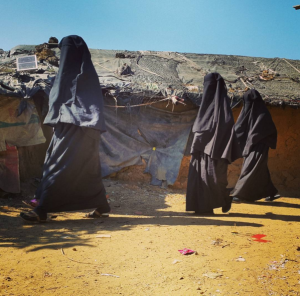
The men are thin and timid, their eyes glazed from the sight of relentless, impersonal violence. The older women in their black burqas look like an endless procession of fairytale-spouting grandmothers. It is the hardest to look at the children. Sunburnt, pot-bellied with worms and hair ravaged by Kwashiorkor, they seem unaffected apart from the starvation. Meal times they pass playing with some prized possession—perhaps a polythene bag tied to a string to make a kite of sorts.
A Bengali local quips that these godforsaken infiltrators are good at only one thing: churning out needless babies. He would’ve been happy to learn of the two-child policy imposed upon the Rohingya Muslims. Except the odd anonymous benefactors, locals view them as intruders, outsiders, degenerates, freeloaders, job stealers, criminal elements and unwanted people in general. They say the Rohingyas’ presence bolsters the dreaded methamphetamine (Yaba) trade and human trafficking.
Yet, for the Rohingya, this is the Promised Land.
Not only are the Rohingyas an unwanted population wherever they go – their stories are lackluster. Their stories are stories of perennial victims.
The mainstream Rohingya discourse draws from four key sources of information. These are:
- The official story
- International investigative journalism
- Social media propaganda
- Refugee anecdotes
And the first three are clearly devoid of Rohingya perspectives. It is their story, but told by others.
All of this puts Bangladesh at a unique position of power. This country has been bearing the brunt of the massive displacement of population from Myanmar for decades. In addition to guarding borders and managing public opinion, it continues to support dwellers of the registered refugee camps. As such it can, and should, serve as a critical corridor for the flow of international aid.
Bangladesh is also at a position to act as a gateway for news and updates about the true extent of the military crackdown. Many of the refugees are carrying around photos and videos of burning houses and military operations, should someone – anyone – ask to see them. It is in Bangladesh’s interest to see international pressure build on the Myanmar regime, so that the refugee situation can once again be brought under control. Such action could also theoretically thwart the possibility of the full-blown insurgency along our southern coastline.
